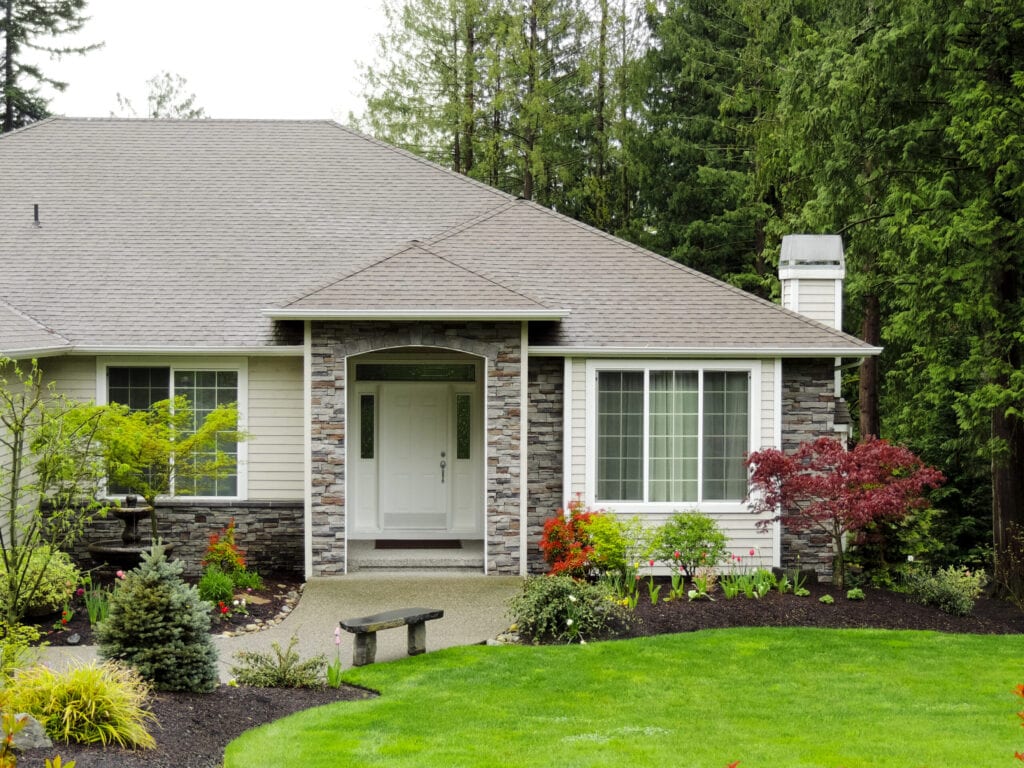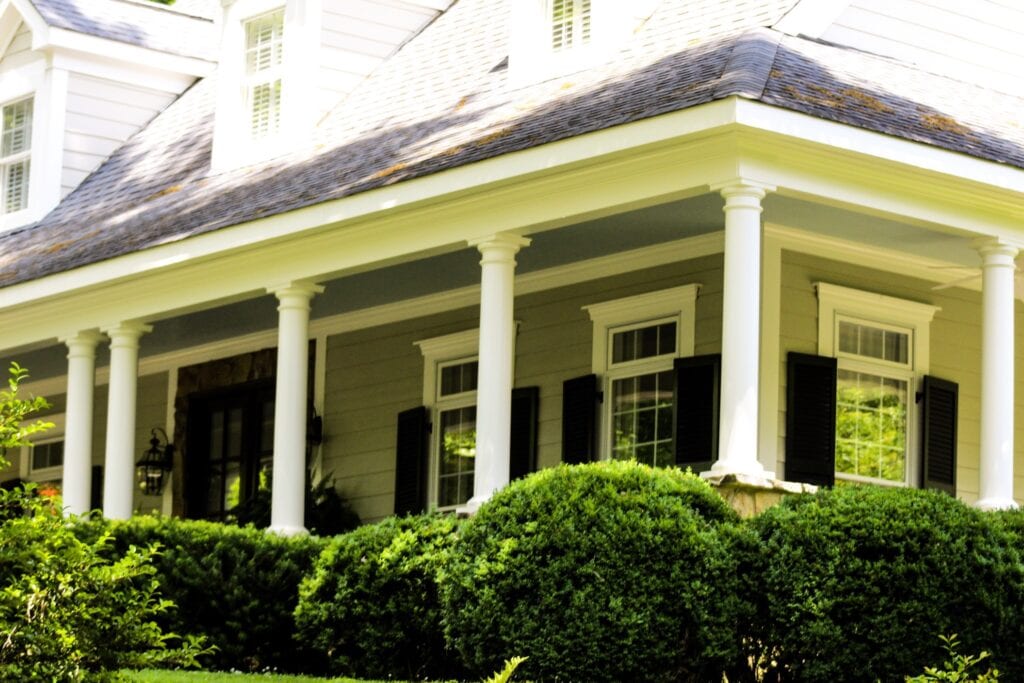How Architects Take Advantage of The Golden Ratio
When you really call back about it, one of the coolest facets of architecture is the ability to take buildings be so different – so varied in terms of size, shape, and style – and yet so like at their core. No matter who designs the building, information technology is synthetic from a blueprint. No thing what a construction looks like one time information technology's finished, it's all the same is assembled from a collection of natural materials. Regardless of what the building's eventual purpose is, the golden ratio was most likely used to determine its proportions.
This ratio – 1:i.61– occurs over and once more in nature. It is found in everything from the shape of our universe, the construction of clouds, and the fifty-fifty the proportions of the human body. Humans take incorporated it into everything from mathematics, to artwork, and music. With such varied applications, information technology should come equally little surprise that this ratio is rooted in compages'south fundamental principles. Continue on to find out how architects have reward of the gold ratio in their piece of work. You may observe yourself looking at your surroundings in a manner that you never have before. Every style of home shares some of the Gilt Ratio's basic conventions. Prototype Via: Lake Country Builders

Jhorrocks / Getty Images
Shop These Products Now: Ornamental Grasses
It's Rooted In History
As with any industry, compages would not exist what information technology is today without relying on the architectural lessons of the past. Phi, which is another term for the ratio, is simply one of those concepts that inform the way in which we look at buildings today.While at that place is some controversy over the exact origins, many people believe that employ of the ratio dates all the way back to the Great Pyramids in Arab republic of egypt. It can also be found in many of the globe's other near famous buildings including: the Parthenon, the Notre-Dame of Laon cathedral, and he Taj Mahal.Every fourth dimension you view a edifice with evenly spaced columns, that'southward a nod to the ratio and information technology's tenure with the ancient greeks. Every time you wait at a dwelling with a peaked and sloped roof that allows for winter snows to easily autumn off, that's besides thanks to the ratios calculations. Side by side time you have a walk around your neighborhood, meet how many examples of phi you can see. We think you'll be surprised how many there are. It's not hard to see the inspiration taken from the Parthenon. Image Via: Dennison and Dampier Interior Design

surfsup / Twenty20
Store These Products Now: Planter Pots – Outdoor Plants
It Brings Balance and Height
As a general rule, nosotros gravitate toward buildings that announced balanced. Though "modern" marvels of structure may be fun to await at, we tend to write them off for day-to-solar day use because they the space is perceived equally less functional than their more than conventionally structured counterparts. One of the simplest means to impart a sense of balance to a structure is to base it off the principles of the golden rectangle. To explain it just, a golden rectangle signifies any shape that can be wholly divided into up into a square and a rectangle that, when combined, institute a ratio of 1:1.61. Since both the lengths and widths of these shapes stand for to the ration, the theory states that you should be able to continue dividing the resulting rectangles into smaller and smaller segments while still maintaining the ratio's proportions.The inverse is as well true. If an architect wants to make a structure larger or smaller to arrange their clients' needs, as long as they follow the principles laid out by the ratio, they take the ability to correctly alter a edifice's proportions with merely a few uncomplicated calculations.
It Allows For Varying Shapes
Of course, not all buildings are going to be perfectly rectangular. Whether the natural landscape, existing lot boundaries, or personal style dictates that the construction have on a different germination, architects demand to be a style to accommodate an array of shapes. Luckily, with just a few extra amendments to the aureate rectangle, architects can easily apply the ratio to whatsoever shape that they tin can dream upwards.Other than the aureate rectangle, hither are are a few of the basic tenants that architects continue in mind:
- Gilt Triangle: Connotes an isosceles triangle in which the smaller side is in golden ratio with its adjacent side.
- Logarithmic Screw: Can exist created by taking an existing gilded triangle and bisecting the angles to make another gilded triangle and continuing indefinitely.
Past utilizing a combination of the golden rectangle, golden triangle, and logarithmic spiral, architects can create a variety of shapes that range from pentagrams to icosahedron, which accept 30 points, and beyond. However it'south important to note that these measurements are often used as approximations or rules of pollex rather than hard and fast figures. Practical limitations on materials, piece of work sites, and human calculation often go far hard to fit inside the ratio exactly. The ratio can be practical to achieve a variety of shapes.

George Rose/Getty Images
It Makes Buildings Aesthetically Pleasing
Architecture isn't just about form and role. Information technology'south also most physical appearance. But as the design elements yous include in your interior design gear up a tone for the rooms inside your abode, the fashion that a building looks has an affect on its surrounding surface area. Add together to that the personal satisfaction that an builder must feel when their work is well received and it'due south no surprise that the ratio plays a role.Studies take shown that, when it comes to conventional attractiveness, we subconsciously gravitate towards others whose proportions about closely conform to the gilded ratio. With that in mind, information technology is such a stretch to believe that we would gravitate towards buildings whose proportions match that ratio as well?Architects keep the gold ratio in heed when it comes time to decide how a edifice's floor plan will flow. It's used when determining features such as how to properly determine a buildings layout, space out windows, and determine where a door should exist placed in a room. While these proportions are considered of secondary importance to the building's structural integrity, adherence to the ratio increases chances that people will find the building aesthetically pleasing. Architects also use the ratio to make up one's mind factors like window and door placement. Image
The aureate ratios applications stretch far and wide. Information technology'southward found in nature, incorporated into great artworks, and even used in marketing campaigns to influence our buying choices. It's no surprise that architects as well jump at the chance to subconsciously influence our opinions of their work. They use information technology to requite buildings balance and height, create obscure shapes, and design beautiful layouts. Accept a expect at the buildings in your hometown. Y'all'll undoubtedly be able to option out a few examples of your own.What are your thoughts on the use of the ratio in architecture? Practise yous think it really has an effectn our perceptions? Tell u.s.a. in the comments.

Source: https://www.mymove.com/home-inspiration/decoration-design-ideas/how-architects-take-advantage-of-the-golden-ratio/